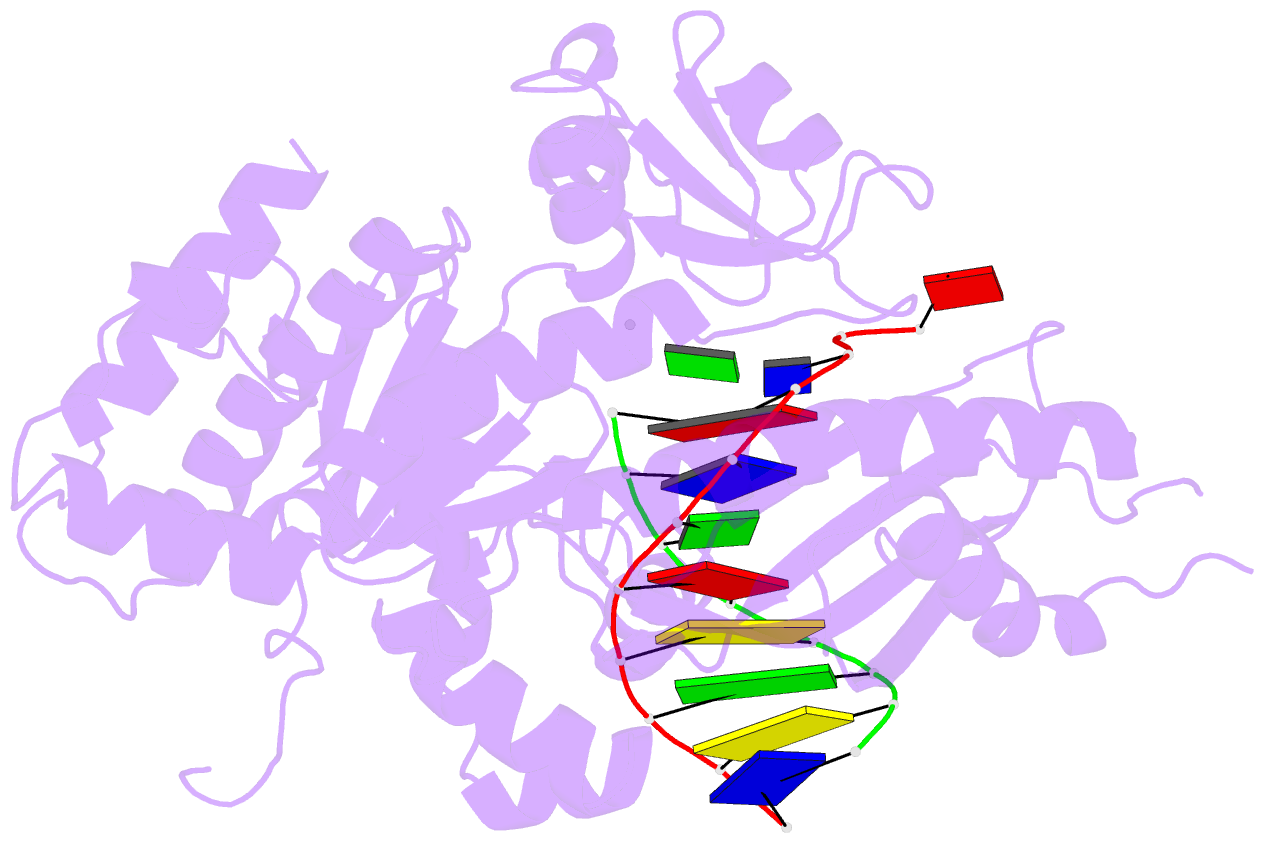Summary information and primary citation
- PDB-id
- 8e8c; SNAP-derived features in text and JSON formats;
DNAproDB
- Class
- transferase-DNA
- Method
- X-ray (2.25 Å)
- Summary
- Human DNA polymerase eta-DNA-ru-ended primer ternary mismatch complex:reaction with 10 mm mn2+ for 30s
- Reference
- Chang C, Lee Luo C, Eleraky S, Lin A, Zhou G, Gao Y (2023): "Primer terminal ribonucleotide alters the active site dynamics of DNA polymerase eta and reduces DNA synthesis fidelity." J.Biol.Chem., 299, 102938. doi: 10.1016/j.jbc.2023.102938.
- Abstract
- DNA polymerases catalyze DNA synthesis with high efficiency, which is essential for all life. Extensive kinetic and structural efforts have been executed in exploring mechanisms of DNA polymerases, surrounding their kinetic pathway, catalytic mechanisms, and factors that dictate polymerase fidelity. Recent time-resolved crystallography studies on DNA polymerase η (Pol η) and β have revealed essential transient events during the DNA synthesis reaction, such as mechanisms of primer deprotonation, separated roles of the three metal ions, and conformational changes that disfavor incorporation of the incorrect substrate. DNA-embedded ribonucleotides (rN) are the most common lesion on DNA and a major threat to genome integrity. While kinetics of rN incorporation has been explored and structural studies have revealed that DNA polymerases have a steric gate that destabilizes rNTP binding, the mechanism of extension upon rN addition remains poorly characterized. Using steady-state kinetics, static and time-resolved X-ray crystallography with Pol η as a model system, we showed that the extra hydroxyl group on the primer terminus does alter the dynamics of the polymerase active site as well as the catalysis and fidelity of DNA synthesis. During rN extension, Pol η error incorporation efficiency increases significantly across different sequence contexts. Finally, our systematic structural studies suggest that the rN at the primer end improves primer alignment and reduces barriers in C2´-endo to C3´-endo sugar conformational change. Overall, our work provides further mechanistic insights into the effects of rN incorporation on DNA synthesis.





